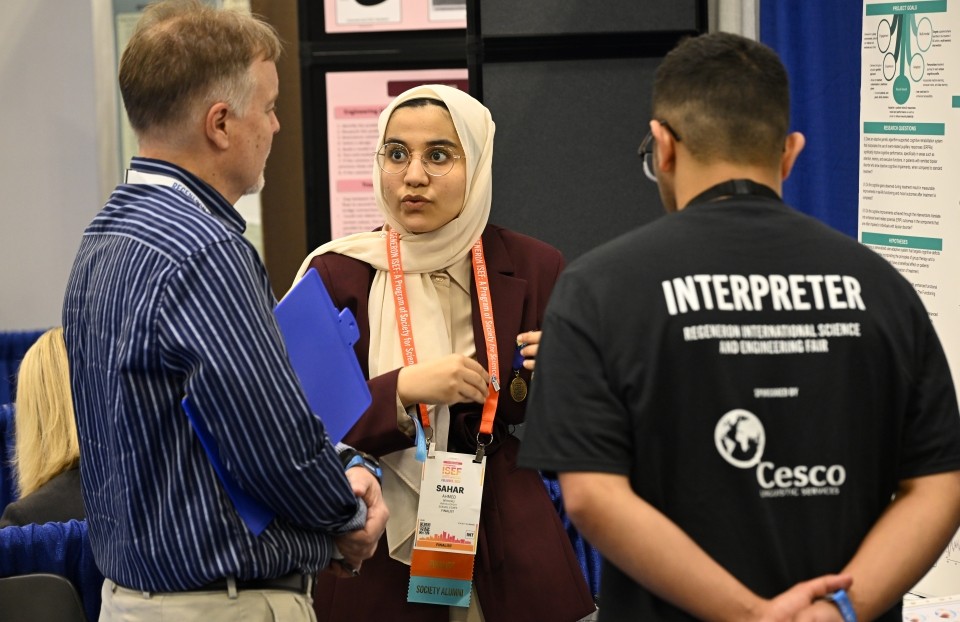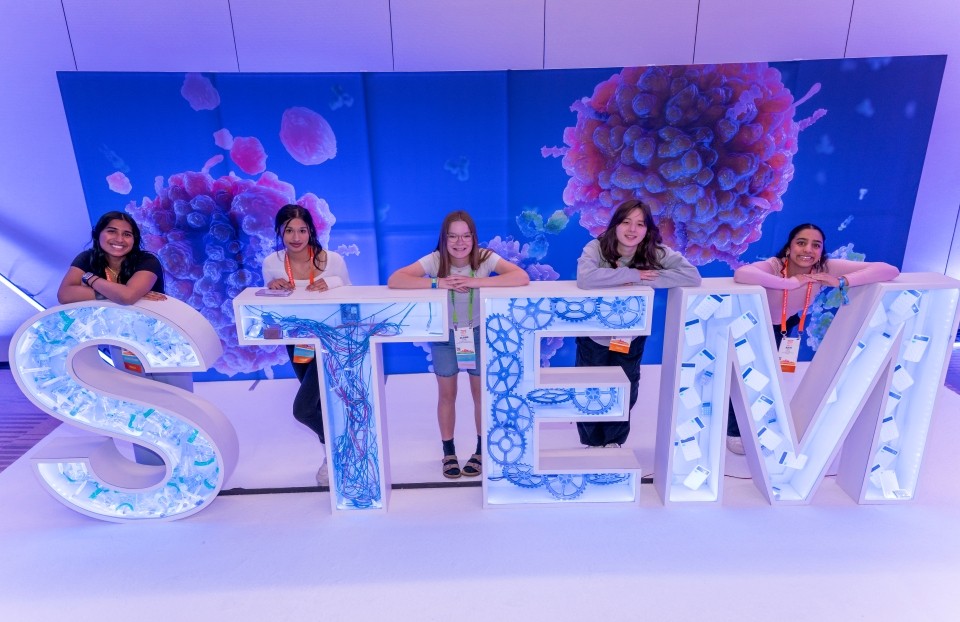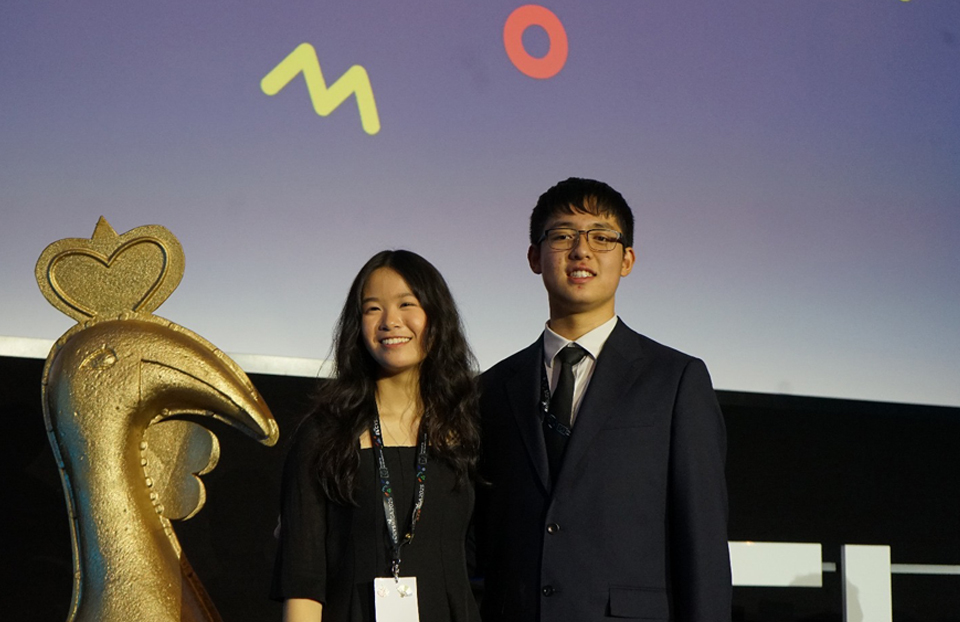Regeneron ISEF panelists answer questions on trending STEM topics
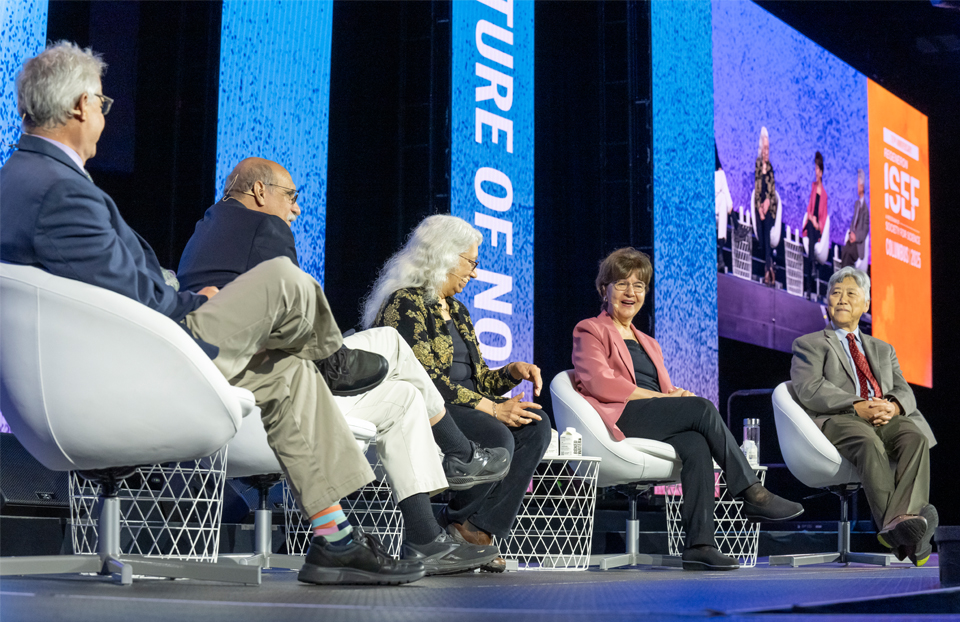
STEM professors from The Ohio State University and Columbia University took the stage for the Excellence in Science & Technology Panel at the 75th International Science and Engineering Fair. Sponsored by Aramco, the event featured four distinguished panelists and was moderated by former NPR journalist Joe Palca. Finalists in the audience asked thoughtful questions about STEM fields and how to navigate them as young scientists.
The panelists were the following:
- Nobel laureate, Martin Chalfie, is University Professor and former chair of the Department of Biological Sciences at Columbia University. In 2008, he shared the Nobel Prize in Chemistry for introducing Green Fluorescent Protein (GFP) as a biological marker.
- Distinguished University Professor Tina Henkin has been in the Department of Microbiology at Ohio State University since 1995. Henkin’s discoveries with RNA molecules have helped expand the study of gene regulation in bacteria.
- Umit Ozkan is a Distinguished Professor in the College of Engineering and Chair of the Department of Chemical and Biomolecular Engineering at The Ohio State University. Her current research focuses on heterogeneous catalysis and electro-catalysis.
- CK Shum CK is a Professor and Distinguished University Scholar in the Division of Geodetic Science and School of Earth Sciences at The Ohio State University. He is a Fellow of the American Association for the Advancement of Science (AAAS) and a Fellow of the International Association of Geodesy.
Finalists asked questions on a range of topics, from artificial intelligence, advancements across STEM fields and how to overcome scientific challenges anticipated in the coming decade.
Below are some insights from the conversation.
We are seeing an increased need for GPS and satellite technology for climate monitoring. What are the biggest challenges in geodetic science today, and what do you recommend for young scientists to help solve these challenges?
CK Shum: The GPS is not only for navigation, but it can also sense climate change. There’s a whole lot of work being done. Let me give you an example of the radar signal. The radar signal could bounce off some ocean, some soil, and then, if you correct it, the signal is very weak. It’s called a signal of opportunity, meaning that you don’t have to pay for it. And if you can gather it, you can interpret the earth, the flood, the drought, and so on.
Given your work in understanding bacterial RNA, what advancements do you believe are most likely to revolutionize the current approach to antibiotic resistance in the near future?
Tina Henkin: There are two major pathways that we need to pursue to identify new antibiotics. Historically, most antibiotics have been isolated as natural products from organisms. A big limitation is that we can only grow about 1% of the microbial organisms that exist. The second major pathway involves identifying new targets. So instead of relying solely on whatever Mother Nature has identified as places that antibiotics can be directed to, we can use structural and molecular information about organisms generated from basic science research. With today’s modeling tools, we can design chemicals that interact with those structures and potentially develop entirely new antibiotics.
What inspired you to begin pursuing a career in science and technology, and what drives you to continue moving forward in this career?
Umit Ozkan: I grew up as the youngest daughter in a middle-class family in Turkey. I loved math, chemistry and science. Chemistry and chemical engineering seemed like a good way to combine my interests.
I also wanted to teach. I wanted to do research and discover new things. What drives me is working with incredibly talented young men and women, like Regeneron ISEF finalists, every day, who are in my classes and laboratories. They motivate me; they inspire me; they keep me on my toes; they challenge me; and I keep learning every day.
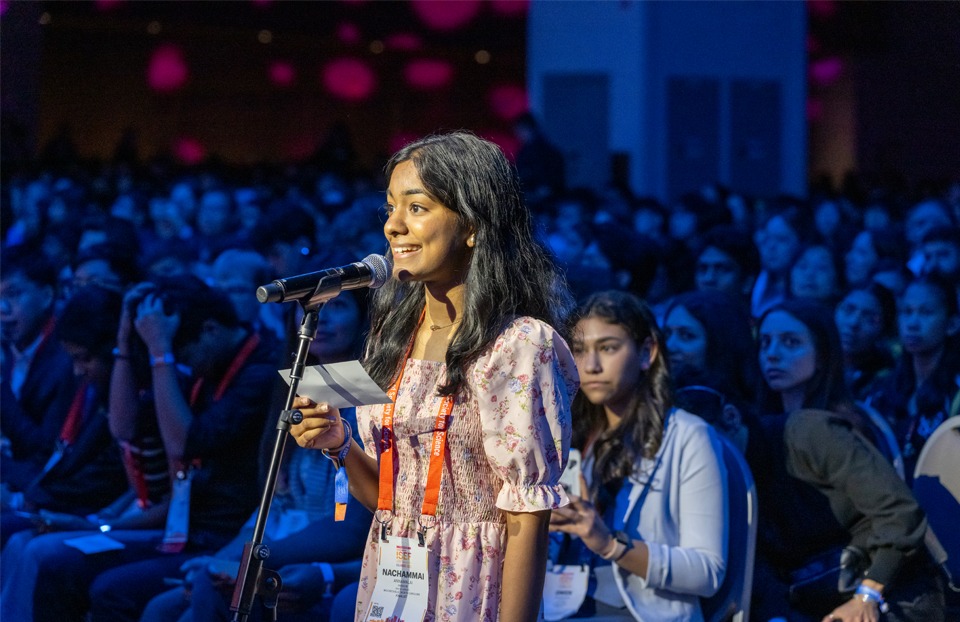
2025 ISEF finalist, Nachammai Annamalai, 17, asking a question for the panelists.
If I ask ChatGPT or any other generative AI to write a research paper, it’ll do so in less than a minute. How can we distinguish this AI-manufactured research from real, genuine, meaningful research?
Martin Chalfie: One good thing about all this talk about AI is it gives a second opinion. It gives another way of thinking, but you must decide on what that is. You also have to fact-check. The problem as I see it with AI is that if people believe it without thinking about it, there can be real danger.
Umit Ozkan: I think it speaks to an even broader issue, not just checking what ChatGPT is offering us, but fact-checking everything that we see on social media, for example. If we all started questioning things, I think we would be much better as a society. I think accepting things at face value, whether it is something we see on social media or ChatGPT offers something, I think that’s where we are hurting ourselves. So that’s very important and question everything.
Advancing science often requires collaboration across disciplines. How can young researchers effectively build cross-disciplinary networks to enhance their work?
Tina Henkin: Don’t be afraid to cold email random people who publish something, write something or speak at a meeting you go to. We love to hear from students. One of the things that’s common that I hear among scientists and all faculty members is that if a student contacts them, they’re going to get a response faster than if another professional scientist contacts them. This is why we’re in academia—we love to interact with students, So, don’t be shy.
In your view, what is the single most pressing challenge that interdisciplinary science must address in the next decade, and how can emerging scientists contribute to this effort?
CK Shum: Don’t limit what you want to do. We mention all these big problems facing us; however, there are many other problems that you could look at. Sometimes, unexpectedly solving one of these problems that you don’t think is related could have large consequences. Look at entrepreneurs, scientists, Nobel Prize winners— what have they invented? You can think well, this is science, this is not practical. But in the end, it could benefit people that you don’t know many years from now. For example, quantum theory was far behind, but now we are using it to build computers and sensors that can do something we didn’t know how to do before. Today, we are measuring very small, detailed phenomena that could help us understand energy or even mitigate climate change.
You can watch the Excellence in Science & Technology Panel in its entirety on our YouTube channel!
